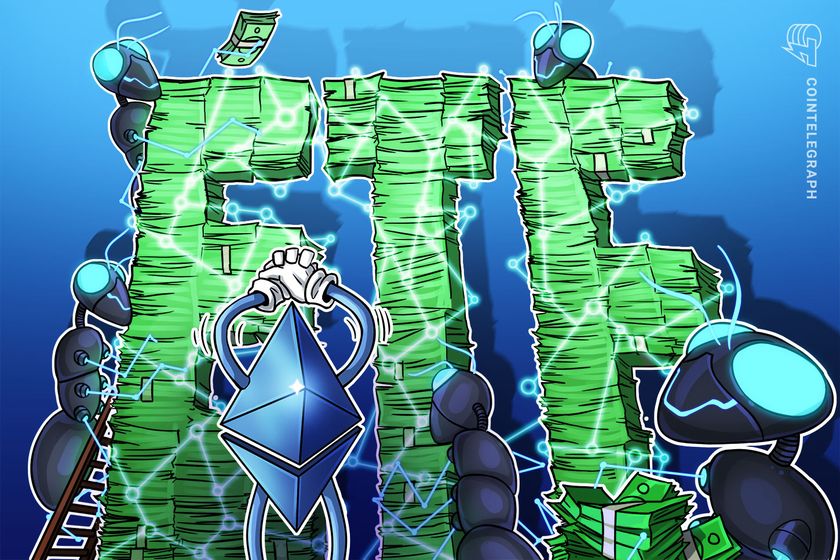Derivatives data shows pro traders turning bullish on EOS price

Retail traders turned their backs on EOS, but derivatives data shows pro traders maintaining a bullish perspective for the short-term.
EOS rallied in May after Block.one, a blockchain software firm, announced a $10 billion funding round to build an EOS-based crypto exchange platform called Bullish. The EOSIO development company revealed that it had raised capital from Peter Thiel and Mike Novogratz, as well as hedge fund managers Alan Howard and Louis Bacon.
In light of the ‘bullish’ news, the recent $6 local top stands 60% below the $15 high reached on May 12, and this leaves investors with little reason to celebrate. At the moment, retail traders are not comfortable using leverage for bullish positions and professional traders have been neutral-to-optimistic since mid-July.

Analysts also pointed to a May 2 report commissioned by Block.one that suggested an increase in the inflation rate from 1% to somewhere between 1.2% and 3.8%. The new issuance rate would be necessary to increase financial incentives for voters and block producers.
However, the lack of deliveries and partnerships caused EOS to quickly lose steam, and the price fell to a low at $3.04 on June 22. The bearish trend ended on June 23, as the little-known ‘Bullish’ exchange said it would be going public on the New York Stock Exchange via a special-purpose acquisition company, or SPAC.
A positive and lasting trend initiated as the ‘Bullish’ exchange released its private alpha version on July 27 and promised a full launch later in 2021. The project also mentioned that it would have spot trading, margin trading, and liquidity pools.
Finally, on Aug. 19, EOS announced free access to live pricing data using real-time market information provided by AlgoTrader. The Swiss-based startup oracle includes multiple assets from various exchanges and can create synthetic instruments, derivatives, and stablecoins.
Retail traders were momentarily bullish
To understand whether traders are leaning bullish as EOS price holds the $5 support, one should analyze the perpetual contracts futures data. This is the retail traders’ preferred leverage instrument because its price usually perfectly tracks the regular spot markets. There is also no need to manually roll over contracts nearing expiry, as required on quarterly futures.
In any futures contract, trade longs (buyers) and shorts (sellers) are matched at all times, but their leverage varies. Consequently, exchanges will charge whichever side is using more leverage at a funding rate to balance their risk, and this fee is paid to the opposing side.
Neutral markets tend to display a 0% to 0.03% positive funding rate, equivalent to 0.6% per week, indicating that longs are the ones paying it.

Data reveals a modest excitement building up from Aug. 8, which lasted less than 10 days. The positive funding rate shows that longs (buyers) were the ones paying the fees, but the movement seems reactive to the price increase and faded as EOS failed to breach the $6 resistance.
Data shows pro traders have a bullish bias
It is also useful to analyze the premium quarterly futures contracts, as whales and arbitrage desks trade such instruments more frequently. In the fixed-month contracts, eventual demand imbalances are reflected by a price difference versus regular spot markets.
Healthy markets should display a 0.5% to 1% premium, which is equivalent to 3% to 6% annualized. If the futures contract’s premium is nonexistent, it is a bearish indicator because investors are not comfortable creating long positions using leverage.
Related: Bitcoin’s race to $50K heats up as solid institutional backing continues

There has been no change in the 6% annualized premium this time despite EOS’s price movement. However, data shows that professional traders have been slightly bullish since mid-July, while retail traders were primarily flat apart from a brief 10-day period.
Although it remains unclear how the ‘Bullish’ exchange launch might impact the price of EOS, derivatives indicate that whales and arbitrage desks positively reacted to the news and have kept the bullish stance ever since.
The views and opinions expressed here are solely those of the author and do not necessarily reflect the views of Cointelegraph. Every investment and trading move involves risk. You should conduct your own research when making a decision.









